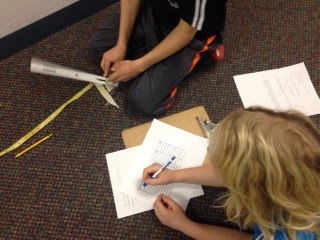Of course, there comes a time when we need to assess our students' learning and understanding. For Blood on the River we give two tests. For assessing knowledge of vocabulary we give a straightforward vocabulary test on the words students had studied. For the "book test" we developed an essay test that requires students to understand the historical events, the cultures of both the English and the Algonquians, and how the choices made by the various leaders of Jamestown affected events. Here it is:
Final Jamestown Essay
Think about the events in Blood on the River and also what you learned from the other Jamestown activities (Choosing a location, survival, debate, using John Smith’s map, etc.). You will write a 1½ to 2 page (handwritten) or 1 to 1½ pages typed response to the following scenario. You may use the Blood on the River book but nothing else. Be sure to include examples (events) from the history of Jamestown that support your ideas.
Scenario: You are the new leader of James Town. Before leaving England you talked with John Smith about the settlement and all of the problems he encountered. You arrive after the terrible winter that killed all but 60 of the settlers. You have more settlers and supplies from England. How will you lead the settlement? How will you get others to cooperate and work toward a common goal? What will the goals be? How will you deal with the Indians? Compare your plans with the plans of past leaders.
We have been using this test for several years. Because I found that children were often confused by this format, we now have a test prep session where I explain to them what they will need to do, how they should prepare, and also give them a rubric. The rubric indicates that they will be graded on how they plan to lead the colony, what kinds of goals they have, how they will get colonists to cooperate, and how they will deal with the Indians. They are also graded on the comparisons they draw with the real leaders of Jamestown (which included both strong, fair leaders, and selfish, short-sighted leaders), and writing mechanics.Though this test does not test reading comprehension in the "normal" way, or examine literary elements, I like it because it requires students to apply what they have learned from our study of history and Blood on the River. For example, by the time we have finished our Jamestown study, they should know that they must find a way to live at peace with the Algonquian people, both because it is the ethical choice and because there are way more Indians than English in Virginia in 1610 and considering the numbers, the English cannot eliminate all the Indians. (I have had students in some years suggest that as a solution, believe it or not.)
This kind of test is not easy for young students, but even if they don't succeed completely, it shows what they know in a deeper way than answering factual-type questions.
 |
| Statue of John Smith, Jamestown |









